Headaches or drying eyes could be signs you’re looking at your mobile devices too often each day. Cutting back on the use of those devices might be the best advice to correct these problems. Unfortunately, work and family commitments might make that impossible. Instead, you can try the following solutions to reduce eye strain from your iPhone or iPad.
Contents
Activate True Tone
In recent years, Apple has introduced the so-called True Tone technology to many of its products. True Tone uses advanced multichannel sensors to adjust the color and intensity of your display to match the ambient light to everything seems more natural.
First introduced on the iPad Pro 9.7-inch, True Tone is available on multiple iOS devices, including the iPhone 8 and later, iPad Pro 12.9-inch (second and third generation), iPad Pro 11-inch, and iPad Pro 10.5-inch.
To activate True Tone on your iOS device:
- Tap the Settings app.
- Select Display & Brightness.
- Enable the True Tone toggle at the top of the screen.
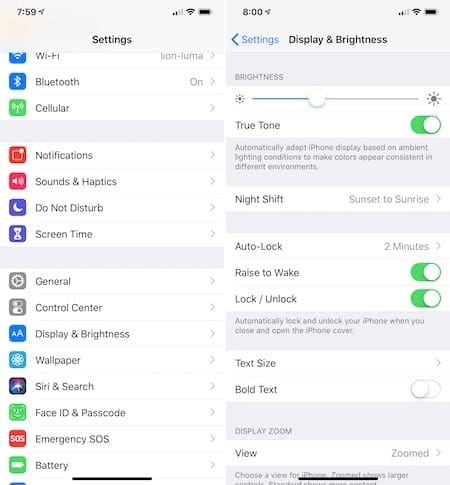
Recommended:
- How to Connect Your Contacts to the Apple Maps app
- HomeKit Troubleshooting: When Your Philips Hue Lights Don’t Work
- How to Add Email Signatures Per Account in the Mail App
- Why is my iPhone Display so dim and off-color?
Consider Using Night Shift
Perhaps the most recognized solution on this list, Night Shift will automatically adjust the colors of your display to the warmer end of the spectrum—making the screen easier on your eyes. It does so by using the clock and geolocation on your device to determine when it’s sunset in your location. When it is, the mobile device will automatically begin to shift the colors to warmer colors. Once morning arrives, the screen will return to normal.
You can turn Night Shift on/off in two locations on your iOS device: through Control Center or the Settings app.
On Control Center
- Open Control Center by swiping up from the lower part of the screen. On the iPhone X or later or any iPad with iOS 12 or later installed, swipe down from the upper right corner of the screen.
- Find and hard press the Brightness Control icon.
- Next, tap the Night Shift button at the bottom-left of the screen.
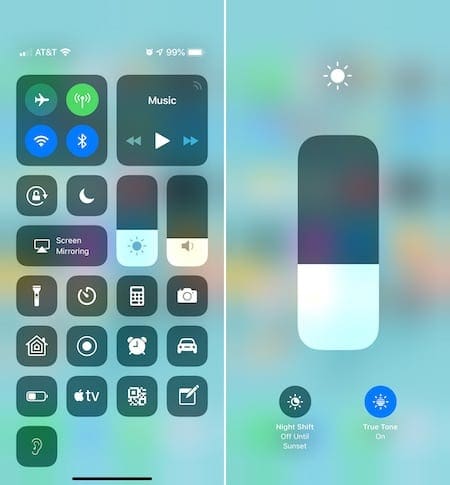
Through the Settings App
- Tap the Settings app on your iOS device.
- Choose Display & Brightness.
- Tap Night Shift.
On this screen, you can schedule Night Shift to run between sunset and sunrise or create a custom schedule. You can also run it manually from this screen and change the color temperature to suit your preferences better.
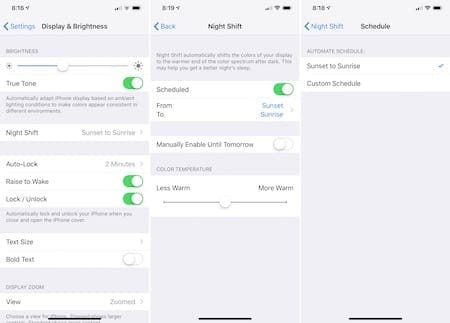
Use Downtime in Screen Time
In iOS 12, Apple added Screen Time, a new way to keep track of your device usage. One part of this feature is Downtime mode. When activated, only apps that you choose to allow and phone calls are available on your device. By setting this restriction, you can encourage yourself to step away from your mobile devices during certain times of the day.
Note: If you’re logged into the same iCloud account, your Screen Time settings will carry over across all of your iOS devices.
Setting Up Downtime Mode
- Tap the Settings app.
- Select Screen Time.
- Choose Downtime, enable using the toggle.
- Set the start and ending time for Downtime.
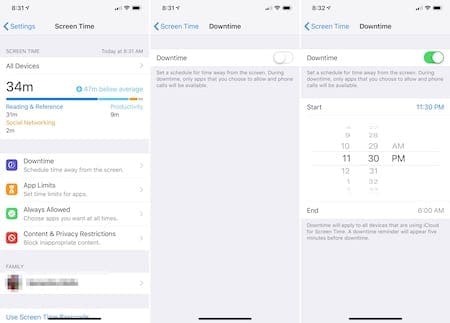
Always Allow
- On the main Screen Time page, tap Always Allow.
- Here, choose the apps you’d like available during Downtime.
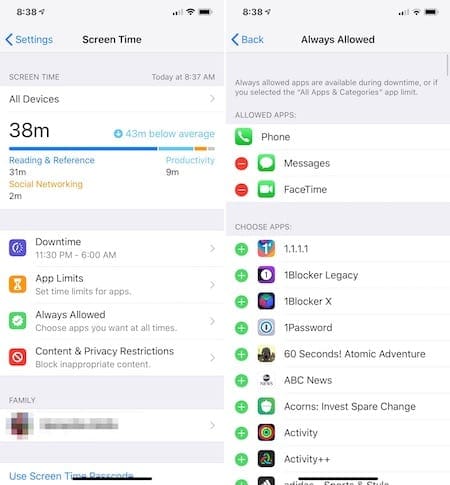
Dark Reading Mode on Safari
Another way to reduce eye strain while using your iPhone or iPad is to use dark mode while using mobile Safari.
- Tap the Safari app.
- Choose the Reading mode icon at the top-left once you find an article online you’d like to read.
- Tap the aA icon at top-right.
- In the popup, you can change the background font size, background color, and font.
Your settings will become your default for Reading Mode.
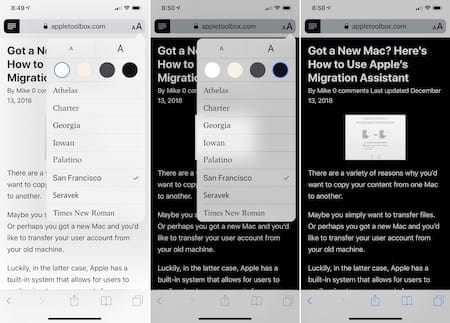
Smart Invert
In macOS Mojave, Apple introduced an all-new Dark Mode for Mac users. Unfortunately, a similar feature has yet to arrive on iOS. Until this happens, you can turn to Smart Invert, which is just one of the accessibility tools Apple includes in iOS to benefit users with eye difficulties.
When activated, Smart Invert will invert the UI into a darker hue. When doing so, however, graphics, images, and app icons will remain the same.
To activate Smart Invert:
- Go into the Settings app under General > Accessibility.
- Tap Display Accommodations.
- Choose Invert Colors.
- Enable Smart Invert using the toggle.
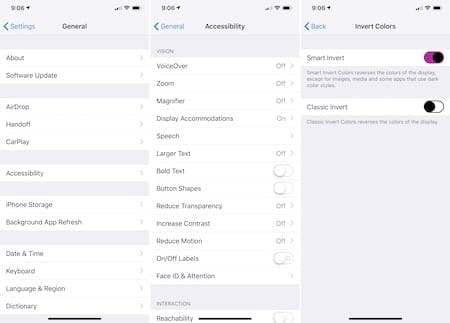
Reduce Transparency
Another option is to reduce the transparency on your iPhone. Doing so allows you to control the opaqueness of the background. In doing so, the text is sharper and blurring in the background is reduced. Reducing transparency should have a positive effect on your digital eye strain.
To change the transparency on your device:
- Go into the Settings app under General > Accessibility.
- Tap Display Accommodations.
- Turn on the Reduce Transparency toggle.
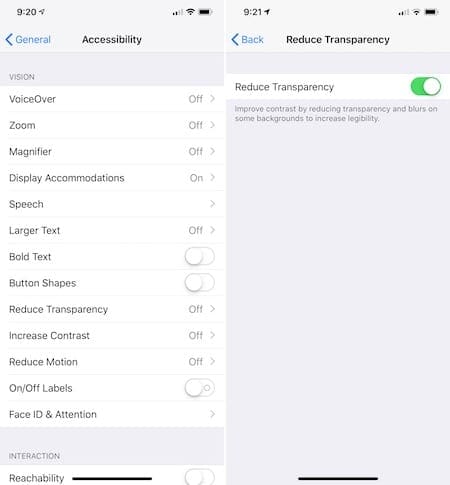
Reduce Motion
Apple’s iOS also has a tool to reduce motion. It’s ideally suited for those who suffer from vertigo and motion sickness. However, it can also lessen the effects of eye constrain. When activated, you’ll see less animation and more static screens on your device.
To turn on Reduce Motion:
- Once again, go into the Settings app under General > Accessibility.
- Tap Reduce Motion.
- Toggle to the On position.
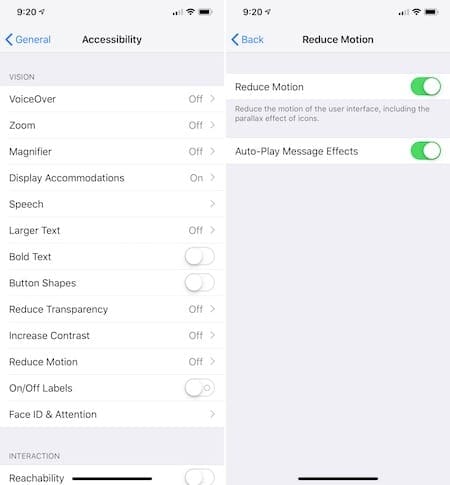
Lessen OLED Flickering
To improve digital eye strain, you can also consider reducing OLED flickering on your iPhone X, iPhone XS, or iPhone XS Max. One of the disadvantages of OLED displays is that they can flicker at lower brightness levels. The solution is to reduce the White Point setting on your device.
On the iPhone models mentioned above only:
- For a final time, go into the Settings app under General > Accessibility.
- Tap Display Accommodations.
- Turn the Reduce White Point toggle to the on position. When you do so, you can change the brightness to match your needs.
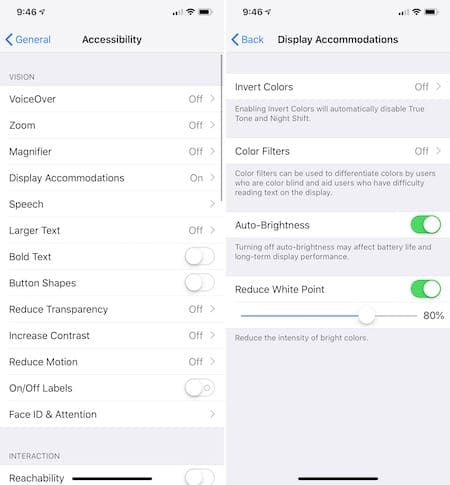
Best Bets
If your eyes hurt from using your iPhone or iPad, there are solutions that don’t involve putting the device down. While not one solution may help to reduce your discomfort entirely, some combination of the options mentioned above might.
See which solutions work for you through trial and error and then let us know below what works best. Do you have another solution? Let us know that too.
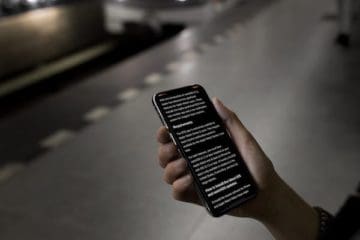


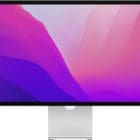

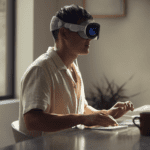

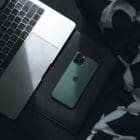


how to have fonts like Kindle ereader which i find much easier on my eyes? as workaround, i’m using app to dynamically adjust font size using pinch.
I have I phone xr , I think xr display is very bad I have now eye staring and headache , before I use I phone 6 , it’s good
I think lcd display is good
I think the non laminated screen is fine for media but makes reading especially small fonts harder. Not the best for reading books in my opinion. Some web sites are awful requiring a lot of zooming.
I’m very happy by using these tips. Thanku so much